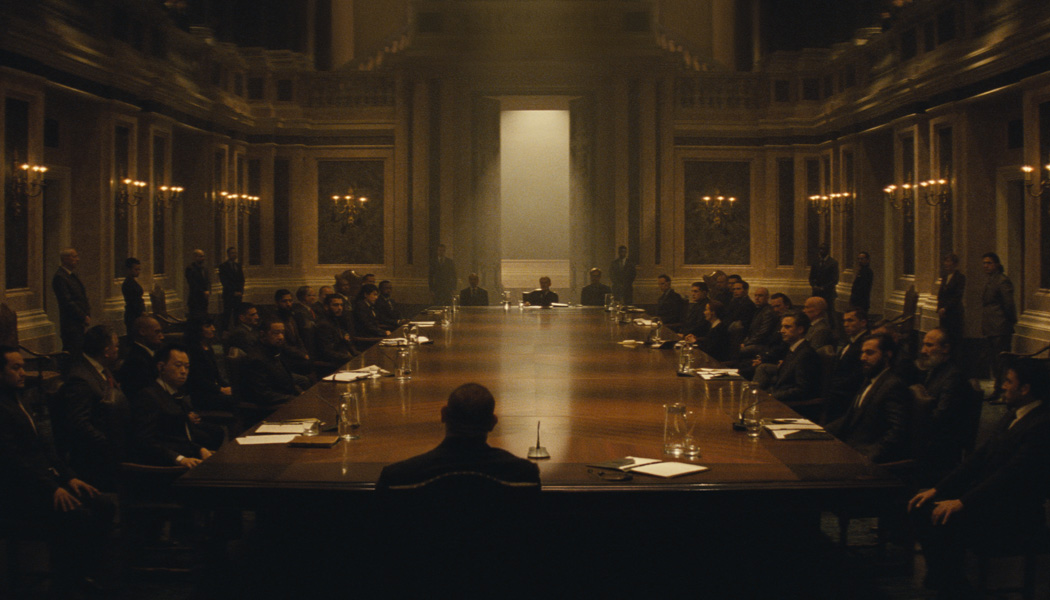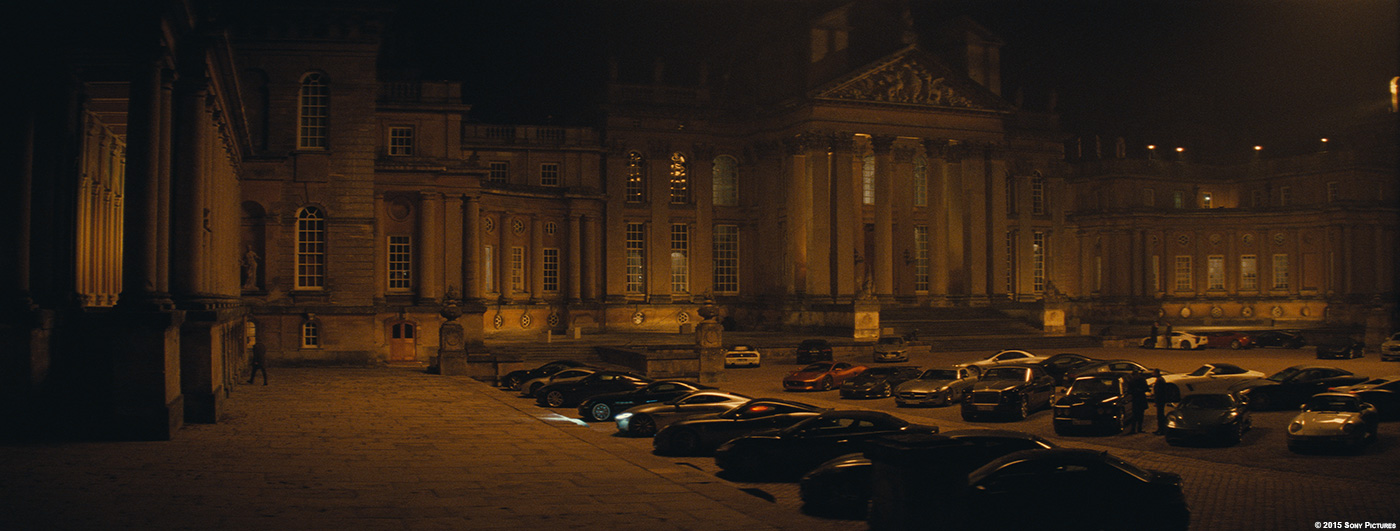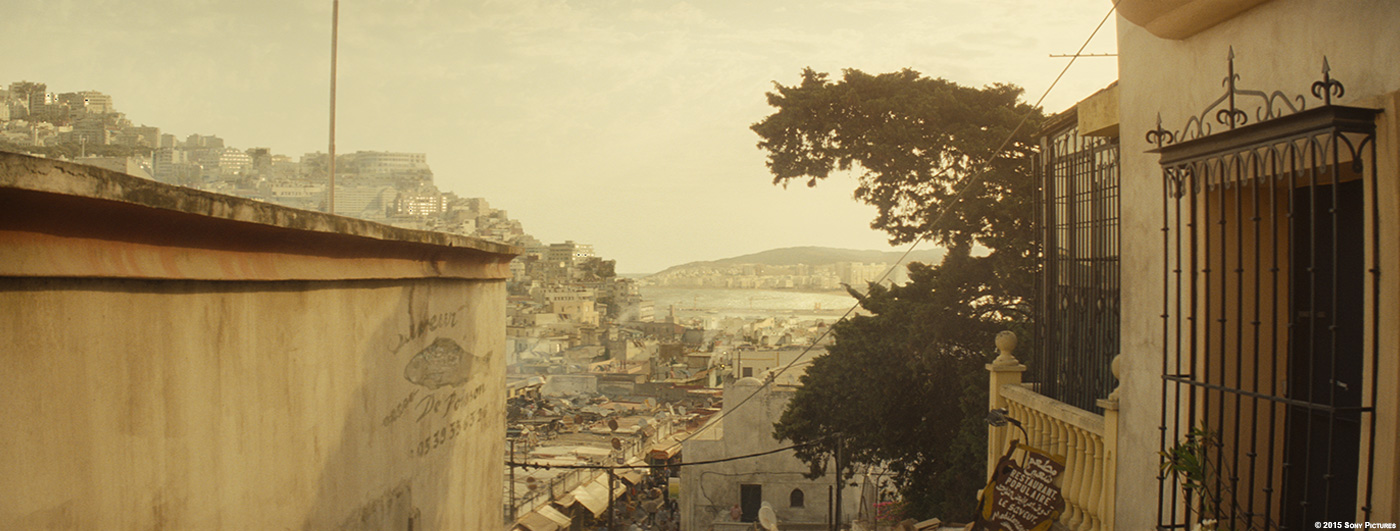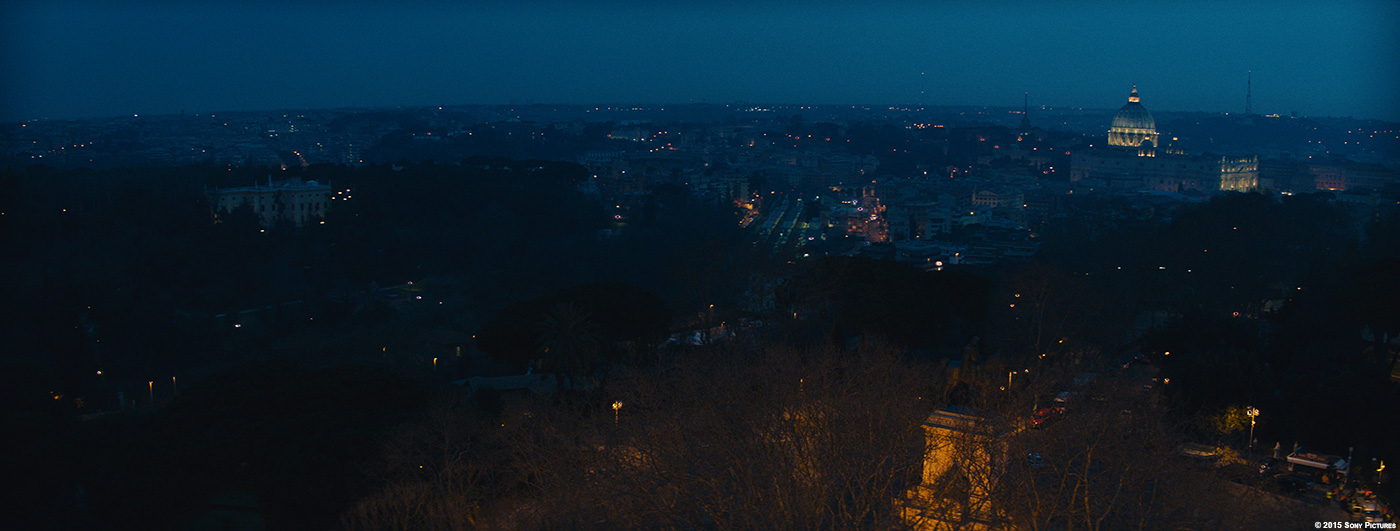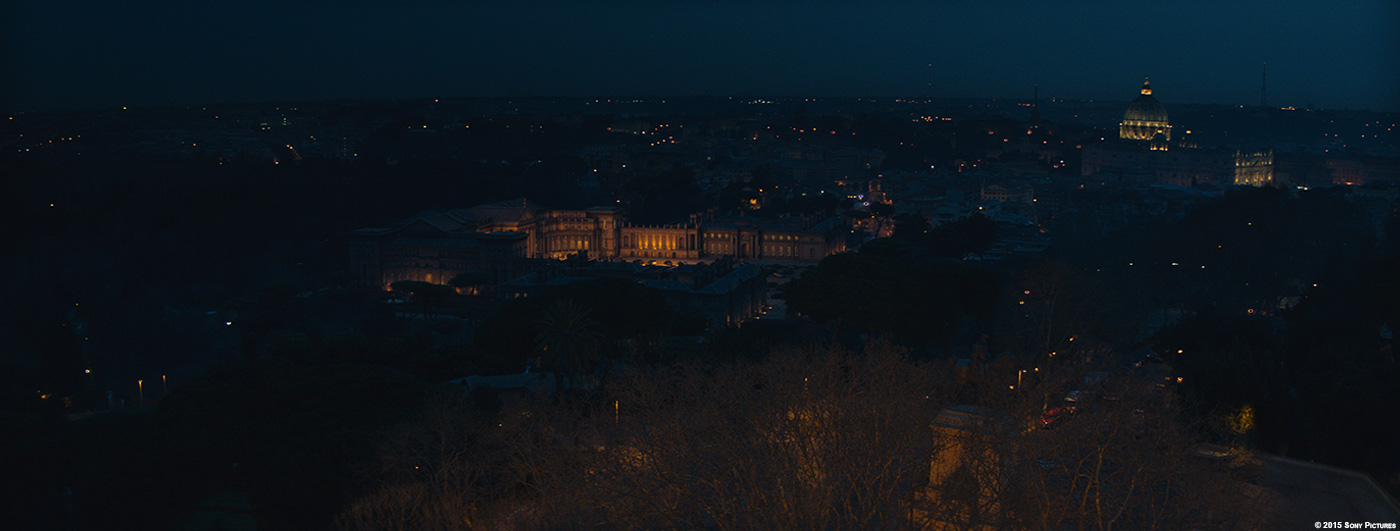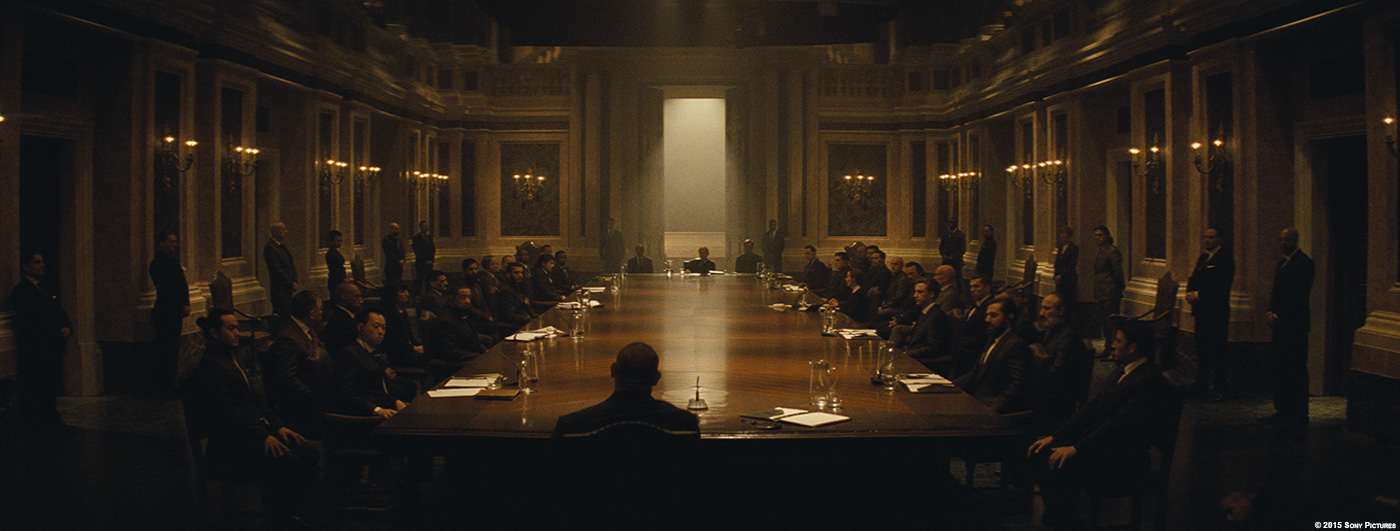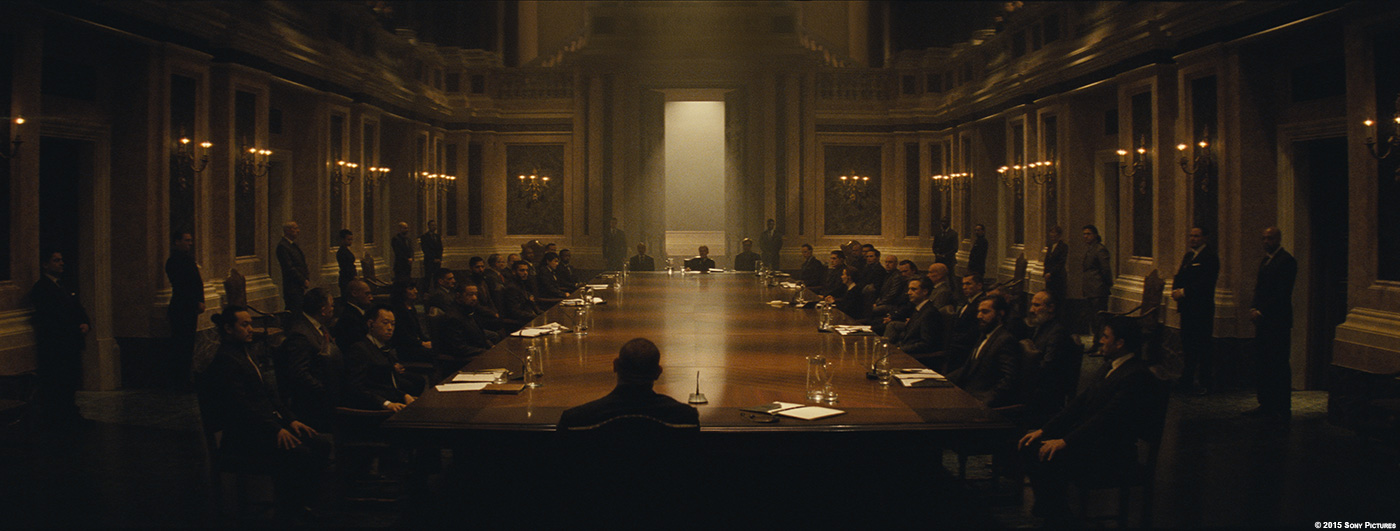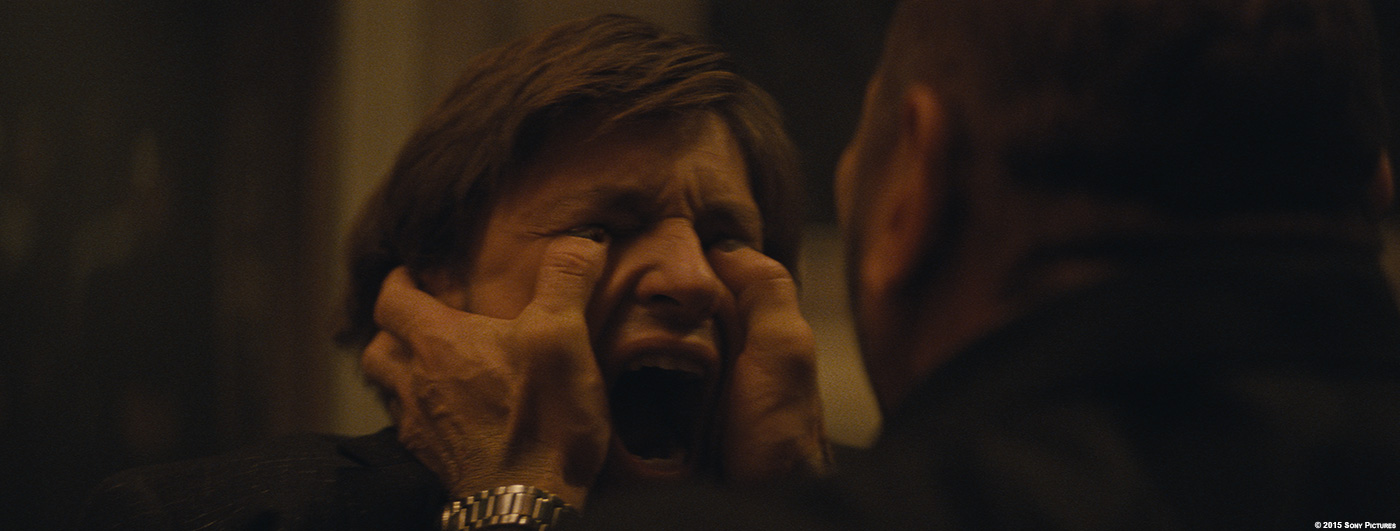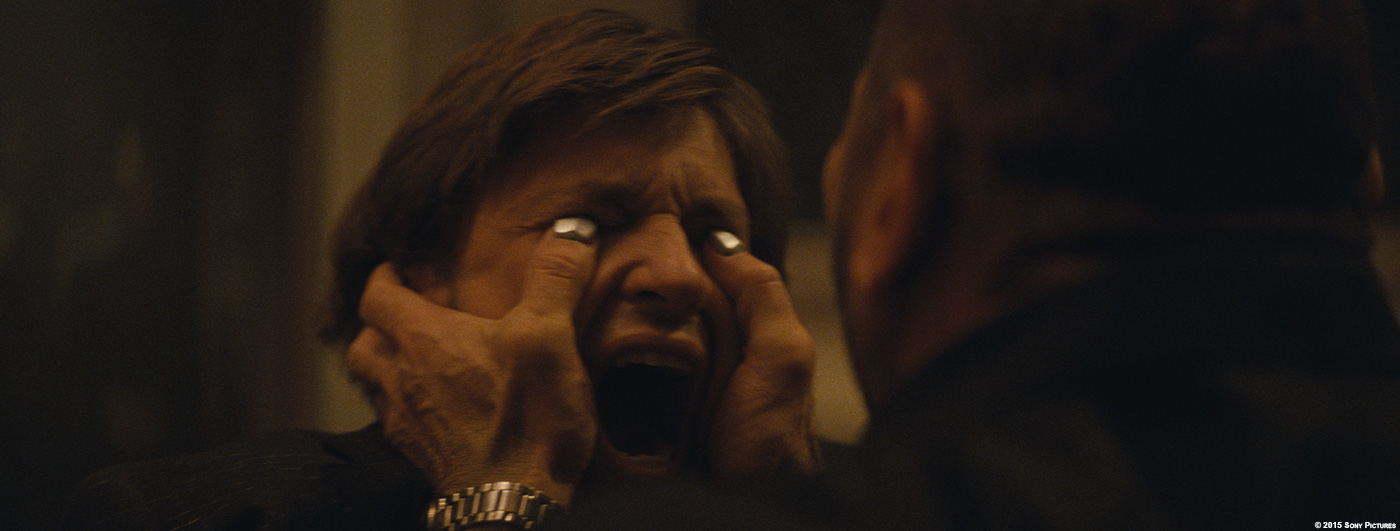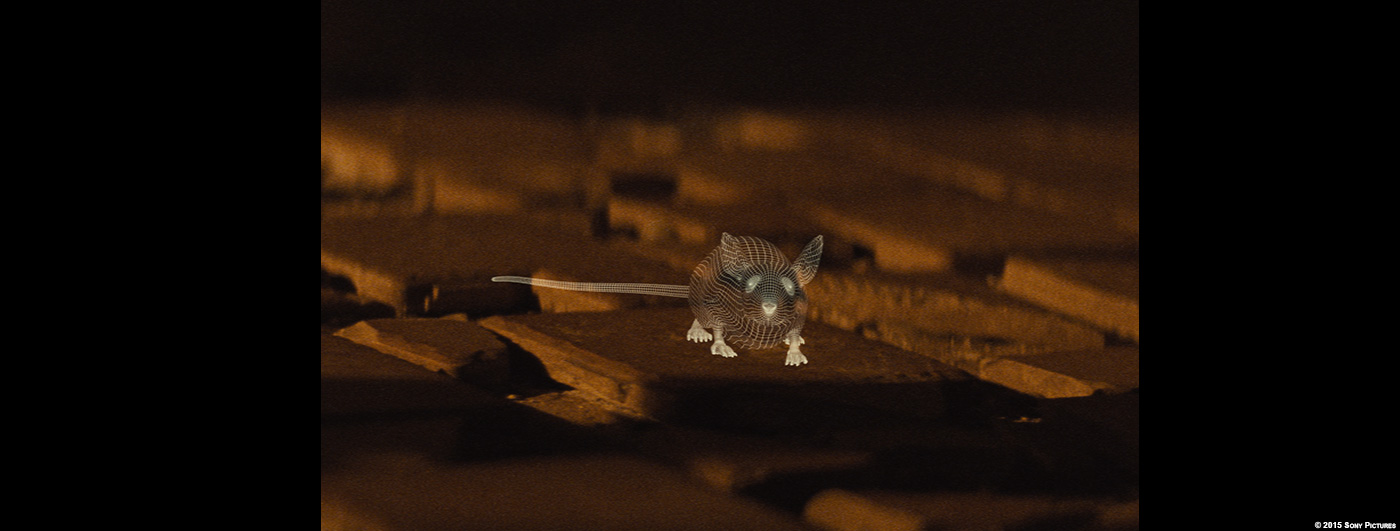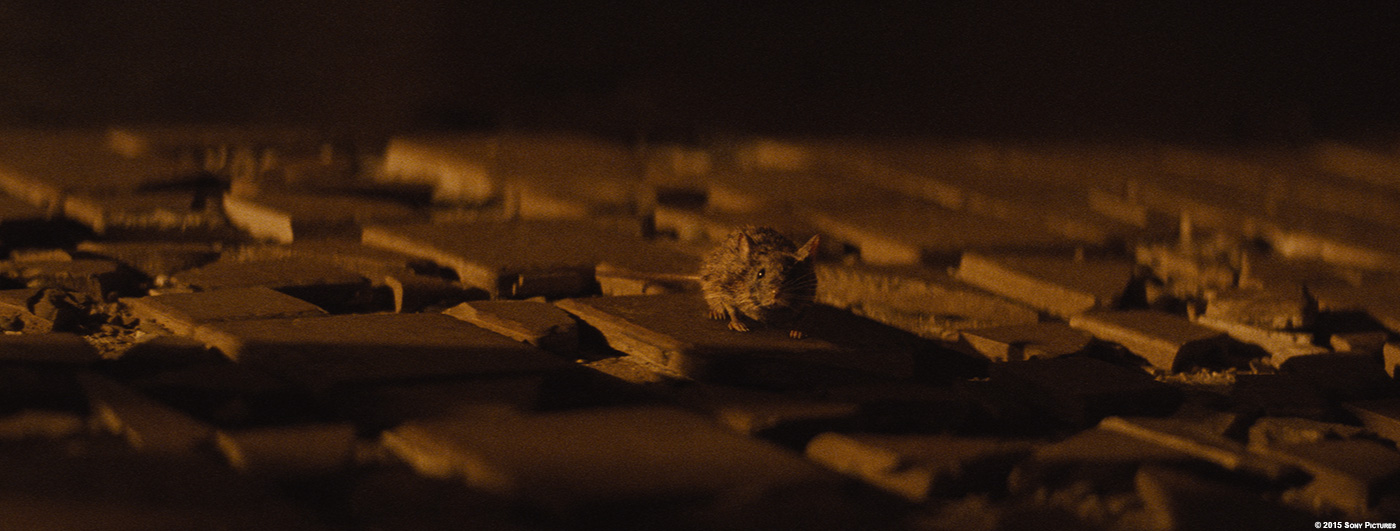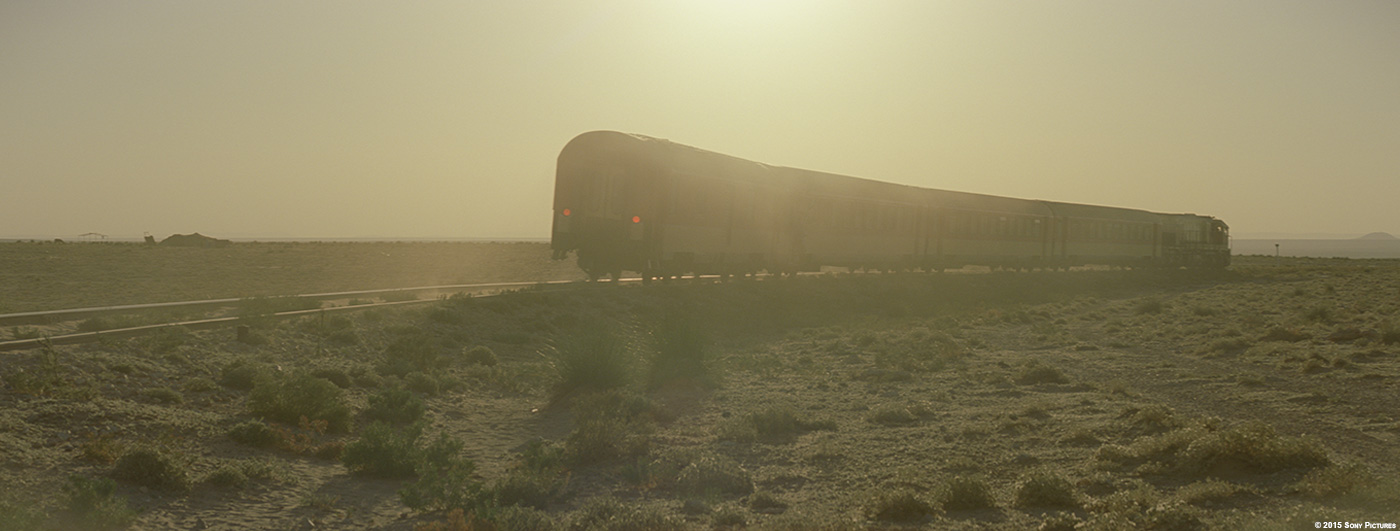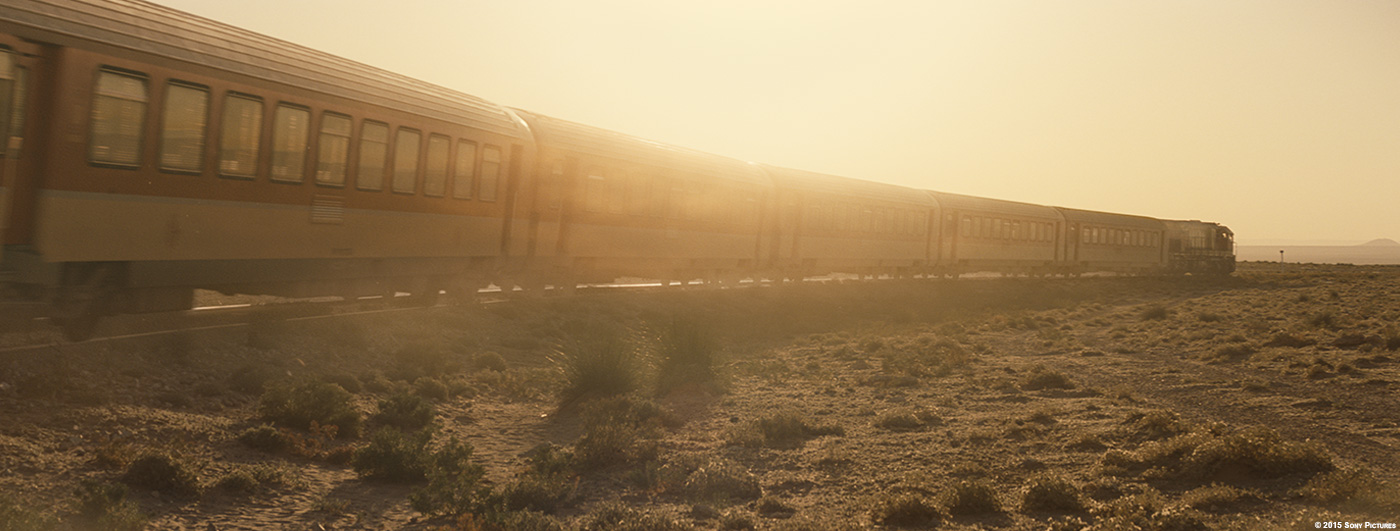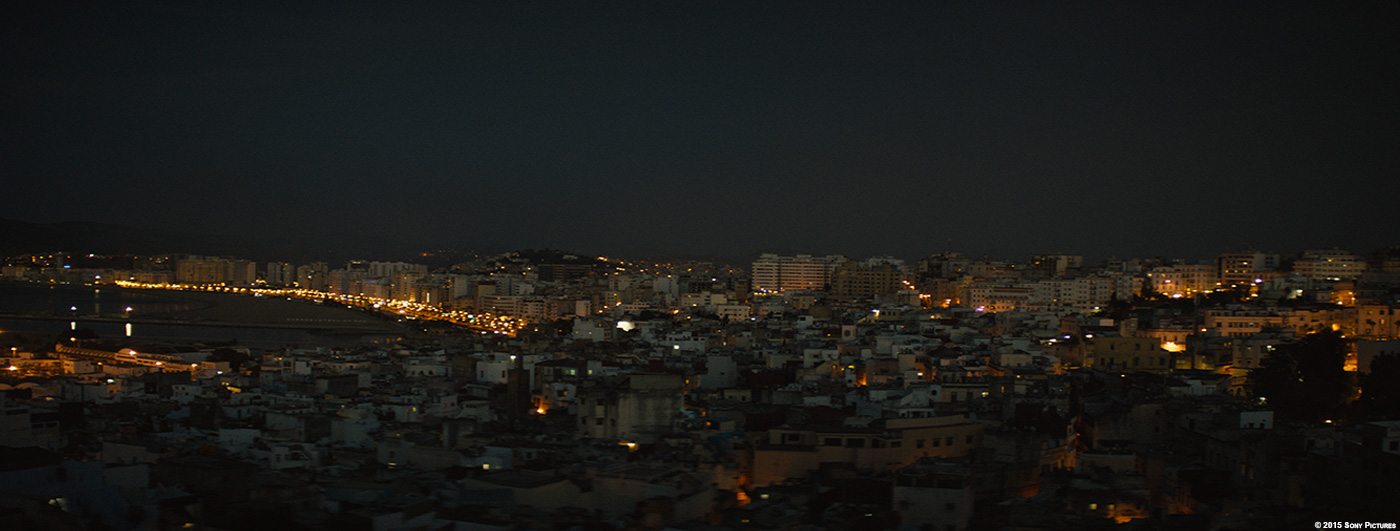Zave Jackson start his career in visual effects in 2000 in the compositing. He joined Cinesite in 2006 and worked on many projects such as JOHN CARTER, SKYFALL, X-MEN: DAYS OF FUTURE PAST or THE MAN FROM U.N.C.L.E.
How did you and Cinesite get involved on this show?
Cinesite has worked on 6 previous Bond films; on the last one SKYFALL we had worked with VFX Supervisor Steve Begg on the Komodo Dragon and London tube train sequences. Initially, Steve called on Cinesite to work with production stabilization and stitching some test footage. This would be used as a proof of concept for the rear projection method that DOP Hoyte Van Hoytema was keen to use on set for the vehicle interiors. Hoyte wanted to use a technique which would capture as much as possible in camera, with convincing interactive lighting on the characters and vehicles.
After the success of our initial tests production captured 3.5K Alexa background plates in Morocco for the Train sequence and in Rome for the car chase. In all, using 3D camera tracking Cinesite stabilized and stitched 18 minutes of Morrocan desert footage and a further 70 minutes of Rome streets footage was stabilized and graded. Throughout the discussions about the rear projection technique, Cinesite was simultaneously bidding other sequences for the film. Ultimately, we were awarded the entire Rome and Tangier train sequences where the rear projection shots also form part of the work.
Can you describe one of your typical day on-set?
I was on set at Pinewood for all of the shoot days where Cinesite’s VFX shots where scheduled. I also spent three nights on location at Blenheim palace whilst they filmed Bond’s arrival and later escape from the Palazzo. On set I worked work with Steve, helping and advising where needed. I also worked closely with the data wrangler team to ensure that the on set reference photography, HDRI images and total station data were going to be as useful as possible once shot production was under way at Cinesite. It was great to spend time on the sets for the train and palazzo interiors, the hotel room and to experience the shoot up at Blenheim with the Aston and the Jag tearing around the courtyard. The opportunity to spend time on set gives an inherent understanding of the sequences, which becomes invaluable once the post production process gets fully underway.
Can you explain in details about your key sequences?
Ultimately, we created about 334 shots for the film from digital matte paintings of Rome cityscapes to a CG mouse. However, our Initial involvement was to prepare footage for the rear projection method that was used during the shooting of the interior vehicle scenes. For daytime scenes inside the train this involved working with over 18 minutes of 3.5k Alexa footage shot using a 4-piece camera array mounted on an open railway wagon out in Morocco. All of this footage was stabilised, graded and stitched into panoramas using techniques based on 3d camera tracks that we did for all of the footage. For the interior car shots Cinesite prepared almost 70 minutes of stabilised and graded footage, this time from 9 separate cameras mounted on a custom camera vehicle that travelled the specific Rome streets that made up the carefully choreographed car chase. They wanted a technique, which would capture as much as possible in camera, with convincing interactive lighting on the characters and vehicle interiors. In many ways the method proved successful, but as the Rome sequence was at night it was also often necessary for the final shots to have background adjustments made. This meant rotoscoping the foreground and re compositing our stabilised footage. This allowed us to adjust the look of the defocus, tweak perspective and correctly represent the intensity of the background city lights which despite the power of the on set projection set-up where not captured on film correctly.
In addition to the rear projection work, for this epic car chase sequence digital effects were used pretty extensively to enhance the physical stunt work and make the shots successful. We added digital gun barrels to the Aston, car interior to the Alfa, debris, shattering glass and sparks to collisions, and SFX flame elements to the Jaguar. We also removed extensive production lighting set-ups, unwanted reflections, safety barriers, tyre marks, cranes, scaffolds, ramps, cameras and cables. In some shots we digitally extended the length of street, adjusted the distance between the chasing cars, face replaced stunt drivers, re-timed shots and added a CG ejector hatch to the Aston to ensure the action worked within the edit.
The location for Oberhauser’s Palazzo was Blenheim Palace near Oxford. For the shots of Bond arriving at the Palazzo as well as other shots in the main courtyard we made architectural modifications to simplify the roofline and make it more classically Roman in style. This was done using a fully lit 3D model of Blenheim created by the team, which was modified to match the required look. For the night-time palace establisher Bond approaches in his Aston, which was filmed from a helicopter over the Piazza Garibaldi in Rome. This shot re uses the CG Blenheim models, digital matte painting work and CG trees to create the surrounding scenery and palace grounds. We also did some tricky crew and vehicle removals from the plate.
The meeting room interior at the Palazzo, where Bond eaves drops on the secret Spectre meeting was an impressive set on A stage at Pinewood studios. Cinesite produced set top ups and ceiling replacements to extend the set. We used a combination of digital matte painting work and a full CG build of the vaulted ceiling and ornate columns needed for this grand room. Digital fixes to the large wooden table where also created to disguise the stunt mats needed for Lorenzo’s fall and the attack on the Spaniard.
Here Mr Hinx demonstrates his henchman’s credentials by attacking this rival Spectre member. He inserts his sharpened, metal thumbnails into his eyes before snapping his neck. The key shot in this scene lingers for a moment as we see Hinx’s thumb’s push into the eyes of the unfortunate Spaniard. Although shot using a blunt rubberised version of the sharp metal thumbnail prop there was understandable tentativeness on the part of both actors. Cinesite needed to digitally stabilise and reposition the thumb’s to make the connection suitably gruesome and believable. Depending on whether the blunt version or the metal thumbnail prop was in use other shots in the scene required either blood additions or thumbnail point extensions.
Bond escapes from the meeting, jumping down from an upper colonnade before running back to his Aston. This scene sees the first of 30 or so head replacements that Cinesite created for the film to either replace the head of the Bond stunt double or Hinx stunt double. We were provided with 3D scans and HDRI photographic reference for both actors, which were used as the start point for the head builds. Both assets were created to a high level of detail, as required by the medium distance shots. A great deal of effort was spent creating the digital versions, from clean-up of the original 3d scan, to rigging, detailed skin texturing, animation, lighting and comp work. As well as a very accurate groom for hair and beard, which was done using Yeti.
One of our main CG assets, which also required a convincing fur groom, was the creation of a CG mouse for the hotel room scene where Bond is searching for whatever Mr White may have hidden there. Following a shot where Cinesite added a full CG representation of the exterior of the hotel Bond is sittingslumped in a chair when the mouse appears in the middle of the floor. Bond interrogates the mouse in a somewhat surreal moment before the mouse escapes through a hole in the wall, giving him the clue he needs to continue his search.
Having created the komodo dragons in Skyfall, we wanted to match or better their success by creating an animal that is as photo real as possible. Cinesite’s Director of Animation Eamonn Butler oversaw animation work on the mouse. Although it needed to hit editorial marks in time and positioning, we were keen for its movement to seem absolutely spontaneous, Animator Sandra Guarda worked hard on this, incorporating a syncopated walk cycle and using extensive online video reference to get its behaviour and movement feeling accurate and natural. Due to the scene being quite dark we where keen to emphasize certain features of the mouse to aid visibility and realism. Sub surface scattering in the lighting gives a partially transparent appearance to the thin, fleshy areas of a mouse, like its ears, feet and snout. We paid particular attention to this in the lighting and at the comp stage to create a realistic look to these parts of the body. Grooming was again created using Yeti, by the same dedicated artist, who groomed the Bond and Mr. Hinx CG heads. The direction from the client on the look of the fur was quite clear, with a request for a somewhat dishevelled and matted look. Specific effort was put into the groom to get the correct clumping and root to tip texturing needed to achieve the look they where after.
Other assets we created included a full CG train for use in scenes after Bond and Madeleine leave Tangiers, the train available to production at the time of shooting did not have the correct number, or type of carriages. In several exterior shots we extended the train from four to seven carriages with part of our full CG asset. We made sure the configuration and type of carriage matched that seen as the fight between Bond and Hinx passes from the restaurant car, into the bar and on into the kitchen and goods carriage. Particular attention was paid to the exterior texturing and displacement of the train as it is seen close to camera at one point, scratches, scuffs and dents and a subtle rippled effect to the coachwork panelling were added to make it feel as authentic as possible.
On the inside of the train during the fight sequence we also contributed a great deal of invisible effects work. This included many more CG head replacements of both the Bond stunt double and the Mr.Hinx double, notably in the scene where Hinx is set on fire. As the three sets for the different train carriage interiors where ultimately on different stages at Pinewood green screen back drops where hung where the view through to the next carriage would be visible. We used a 2.5D digital matte painting approach, projecting imagery based on HDRI photo reference taken on set. This was in order to recreate backgrounds for restaurant, bar and kitchen carriages that would move and parallax correctly with the dynamic hand held camera moves used during the fight.
How was your collaboration with Production VFX Supervisor Steve Begg?
Steve would use various methods to pass on feedback and give us shot briefings. Depending on complexity it could be a written note or an annotated frame. However, Steve much preferred whenever possible to pop into the studio here at Cinesite and discuss the work in detail so that he could fully convey what the VFX department and ultimately the director where looking for. Steve was open to suggestions but always had a clear idea of what he was after and gave us clear direction. Where the directors thinking on a shot was perhaps less certain, Steve would always guide us in presenting multiple options, which always helped us, gain the best quality of feedback.
What was the biggest challenge and how did you overcome it?
For a Bond film the biggest challenge for the VFX is for them to support and enhance the film but to remain completely invisible. Recreating elements from the real world, which all viewers will instinctively be familiar with, can often present more of a challenge than inserting something that is obviously invented. Some of the most challenging individual shots were the head replacements for the stunt doubles of Mr Hinx and even more so for Bond. Creating a photo realistic CG element is one thing, but creating one that matches the specific parameters of looking like a well-known actor adds another level of difficulty. Our success in this was in part due to a wealth of real world moving and still photo reference, which we set out to match as closely as possible at every stage of the process. We constructed a full facial rig so that we could create all the facial expressions required. However, we quickly learned that the animation of facial features required a subtle approach. More extreme facial poses would quickly detract from a convincing likeness to the viewer’s perception of how the real actors look.
A big thanks for your time.
// WANT TO KNOW MORE?
– Cinesite: Dedicated page about SPECTRE on Cinesite website.
© Vincent Frei – The Art of VFX – 2015


